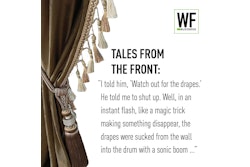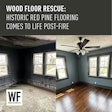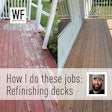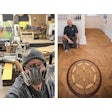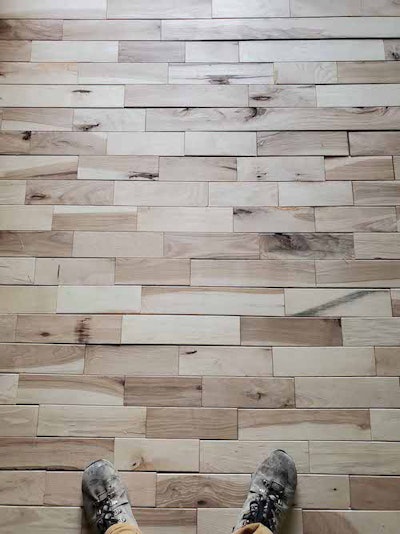
“All wood floors look the same, and the only real differences are the colors.” I was told this by a client.
Really???
Well, let me help you with that.
Speaking for myself only, I believe that fashion is a look and NOT a price. Some manufacturers make products that look similar, but the gold can be hidden in the details—details that aren’t always going to be obvious to customers.
I went on an install estimate the other day, and the client asked why one product cost more than the other. I explained that in this particular case there were only small differences—they were both nearly the same in basic respects, and if one had the look or color they liked, then that product was the best choice. A difference in $0.30/sq.ft. over a 1,000 sq.ft. install amounts to $300, and if the client favored a particular color from either brand as a high consideration, then the cost or savings was justified. I explained that some brands have price points that are set higher than other brands even though they look very much the same or are or very similar in basic respects. How many ⅝-by-5-inch prefinished, engineered, scraped plank oak floors in a brown color are out there? It can be overwhelming.
But sometimes the differences justify a completely different price point, no matter how much more expensive it is. Years ago I installed, sanded and finished a paper-back parquet. Each tile was a square foot and cost the customer about $23 for each tile—just for the material. The installation and refinishing were extra. That customer thought they were getting a deal because of the overall look of the floor when done. It was miles above the usual kind of wood floor customers expect when they go floor shopping, and they would have never seen a floor like that in any big box store, carpet store, Pinterest picture or Instagram post. It was stunning, exceptional, striking, distinctive, haunting ... I felt honored to have had the experience to this day.
On the other end of the spectrum, I’ve come to understand that most of our customers do not know the height and breadth of our trade, and settle for a choice that is great at the moment. We have all heard the stories of the fancy house with cheap flooring, and some homes are so distinctive that they truly deserve better. For the most part, the regular stuff is just fine, but if the customer knew what an extra $0.30 (or more …) per foot could have translated into, they might have upped their choice—if someone had explained it to them.
RELATED: How I Combat the Common Excuses for Customers Not Paying
For example, let’s go back to that ⅝-inch plank I mentioned above. One manufacturer sells it for $2.59/sq.ft. wholesale, and it’s a great product at any price. I genuinely like it, but it cannot be floated over concrete. I offered the customer a product that looks nearly exactly like it but could be floated; that floor cost $4.79/sq.ft. wholesale. Besides being able to be floated, there were a few other distinctions that could go unnoticed—unless the contractor pointed them out. The $4.79 plank was random length from 16 to 75 inches long. The lesser plank only had five lengths in the box. After the floor is installed, the difference in lengths makes the floor look different than the higher priced choice, and some customers don’t care—but others do. To push the point even further, many manufacturers tout long-length product that I’ve seen up to 12 feet or more. One even has an engineered plank that has a solid-sawn top layer and is 14 inches wide. Are those things worth it to your customer? They might be—if you take the time to teach the customer about them.
We have all read the social media posts where the installers are chatting about stair steps being too uniform and close together and/or the occasional sin of “H” joints in the pics on certain posts. With some of these lesser priced floors that offer few choices in board lengths, it is challenging at best to get a true random pattern in the floor. With unfinished oak strip, very few boards in the whole floor are the same length, and we can easily take random to the highest levels. I, for one, will never ding an installer on the occasional “H” joint on a lesser price floor because the choices are just not there when you have only four or five lengths to choose from. Is it worth it to your customer to not have that appearance and buy a more expensive product? They’ll never know about that unless you tell them.
Then we have the LVP planks that are all the same length in the box, and that length is about 4 feet or so. Given the width, cutting your starters only gives you four to five different lengths, and patterns emerge in the floor that you just cannot get away from. No one notices most of the time, but in the selling of the floor, it is helpful to explain these differences exist and stand on the difference in choices as selling points. You want LVP? Well, here you go. You want wood? ... and so on. Each are perfect for their own application, and customers needs to know that if your company had the higher bid, it was high for a valid reason, not just because you charge more and are a fancy pants.
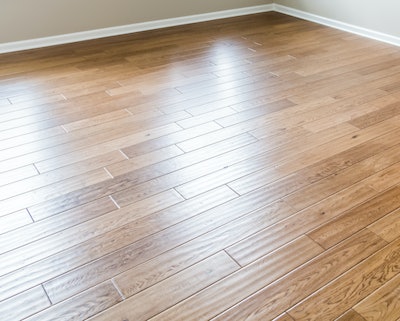 The different ways that "scraped" floors can look might matter to our clients—or not. It's our job to find out.
The different ways that "scraped" floors can look might matter to our clients—or not. It's our job to find out.
Some of the prefinished hand-scraped floors are truly hand-scraped to the point that each board is a snowflake because of its individuality. Personally, I love the look of these floors the best, and they deserve a higher price point and the distinction that goes with it—but that is my own personal preference. When selling “real“ hand-scraped floors, a discriminating customer may react in a favorable way to this choice. Or they may go for a different price point for their own reasons, like color.
Having knowledge of this choice means everything.
As a side note, lower priced floors have a secure place in the world with house flippers and temporary applications like media events or film sets for TV shows and commercials. It is my thought that the tiny details don’t matter in situations like these.
In closing, during the bid process we are best served if we follow up and reach out to the customer to get their feedback after you submit your quote. I hesitate to ask, “How are we on the price?” because that is not my top concern, and we should not sell our floors solely on price. What has my attention is: Did the bid reflect what they wanted? If the bid exceeds their budget by “X” amount of dollars, then lowering the bid means perhaps omitting a bedroom (for now) or changing the floor they chose (like substituting the $2.59 plank for the $4.79 plank), or switching from glue-down to floating (when the manufacturer gives us that choice for the same plank). Maybe a repeating pattern is not a big deal, or maybe repeating scrape marks from one side of the house to the other isn’t even noticeable to the client because all they see is “wood.” Everyone runs their game as they see fit, but we are not running a charity and should not be “forced” to come down in price just because clients choose a more expensive product than their budget allows. What is important is that the buyers know that what they are getting is because of their choice—not because we simply charge more for no particular reason.
Stay sharp out there—you are all heroes!
See all of Angelo DeSanto's popular blog posts and magazine articles here.
RELATED: The Threat of the 'Deal'—And Do Customers Care? Part 1
















